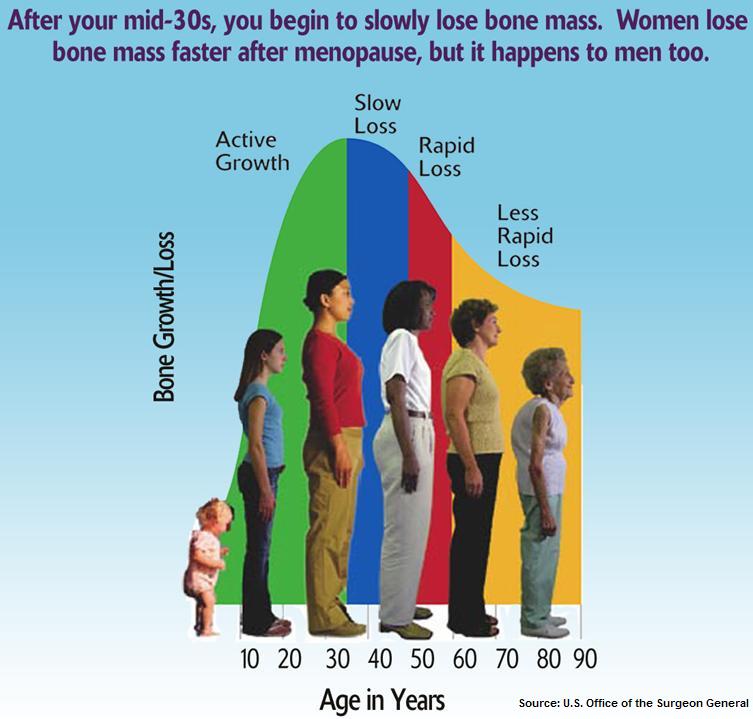![]()
 Laboratoires Servier / CC BY-SA
Laboratoires Servier / CC BY-SA
What is bone demineralization?
Imbalance between bone formation and bone resorption
Homeostatic mechanisms such as mechanical forces, nutrition, hormonal function (e.g., parathyroid, gonads) work to progressively replace and restore bone tissue to an ideal density. Failure to maintain balance between osteoblastic (bone forming) and osteoclastic (bone resorbing) systems results in loss of bone tissue.
Peak bone mass is typically maintained between ages 25-40

Terms
- bone mineral density
- osteopenia - low bone mass (thinning)
- osteoporosis - significant loss of bone mineral density (porous)
- vertebroplasty - surgical procedure where cement-like substance is injected into affected vertebral bodies post-compression fracture to increase strength of axial bone tissue and decrease pain
- kyphoplasty - surgical procedure where collapsed area in vertebral body is inflated and then injected with bone cement post compression fracture
Incidence of Involutional Bone Loss
- most common in women
- women lose 35-50% of trabecular bone mass, 25-30% of cortical bone mass
- more common in low body weight, slight frame body type
- most common in caucasians and asians
- loss of BMD is associated with aging, menopause, estrogen deficiency throughout the lifespan
- secondary bone loss/osteoporosis is correlated with
- associated with corticosteroid use (i.e., treatment of RA or other autoimmune disorders/immunosuppressives)
- nutritional influences include: eating disorders, food insensitivities, alcohol use/abuse, low calcium intake, low Vitamin D
- environmental: decreased exposure to sunlight results in lower Vitamin D concentrations
- lifestyle influences: decreased WB activity, smoking, caffeine (studies vary)